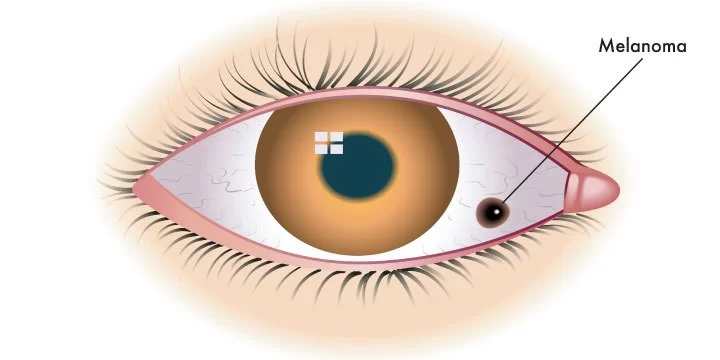
- what-is-eye-melanoma-and-why-early-detection-matters - What Is Eye Melanoma and Why Early Detection Matters
- early-warning-signs-of-eye-melanoma - Early Warning Signs of Eye Melanoma
- personal-experience-identifying-the-symptoms - Personal Experience Identifying the Symptoms
- diagnostic-process-and-medical-guidance - Diagnostic Process and Medical Guidance
- eye-docs-helps-you-monitor-eye-health - Eye Docs Helps You Monitor Eye Health
1. What Is Eye Melanoma and Why Early Detection Matters
Eye melanoma, or ocular melanoma, is a rare but serious cancer that forms in the pigment-producing cells within the eye. It can develop in different parts of the eye, including the uvea, iris, or choroid. While it’s uncommon, early detection is crucial—especially since it often progresses silently. Knowing how to recognize symptoms of eye melanoma early may be the difference between timely treatment and serious complications, including vision loss or metastasis to other parts of the body.
Many people mistakenly believe eye cancer would be obvious or painful. The truth is, in early stages, it often isn’t. That’s why education and awareness can be lifesaving. A routine eye exam could reveal what you never knew was there.
2. Early Warning Signs of Eye Melanoma
2.1 Blurry or Distorted Vision
One of the most subtle and frequently overlooked symptoms is a gradual change in vision. Blurred spots, wavy lines, or partial vision loss can occur if the melanoma grows near or on the retina. Many attribute this to age or eye strain, which delays diagnosis. If your vision suddenly changes without an obvious cause, it's worth getting checked immediately.
2.2 Flashes or Floaters
Seeing flashes of light or floating specks in your field of vision—especially when not accompanied by trauma—can be early red flags. While these symptoms are also common in other eye conditions like retinal detachment, they should not be ignored. Melanoma in the eye can irritate surrounding tissues and lead to these visual disturbances.
2.3 Changes in Eye Appearance
Sometimes, melanoma can visibly alter the appearance of the eye. You might notice a dark spot on the iris (colored part of the eye), a change in pupil shape, or even bulging of one eye. These signs are more advanced but can still be the first visible indicator for some individuals. If something looks off in your eye’s shape or color, don’t delay a professional evaluation.
2.4 Loss of Peripheral Vision
In cases where the melanoma affects areas toward the side of the retina, the first vision to go may not be central—but peripheral. A growing blind spot or an unusual narrowing of your field of view should be taken seriously. This is especially important for drivers, athletes, or people whose daily routines rely heavily on full visual awareness.
3. Personal Experience Identifying the Symptoms
3.1 A Real Patient's Journey
Mark, a 42-year-old graphic designer, dismissed his early signs as “too much screen time.” After experiencing mild blurriness and occasional flashes of light, he visited an optometrist expecting a new glasses prescription. What followed was unexpected: a referral to an ophthalmic oncologist and a confirmed diagnosis of early-stage choroidal melanoma.
Thanks to prompt attention and early screening, Mark underwent laser therapy and retained his vision. He now advocates for eye health awareness, saying, “If I had waited even a few more months, it could’ve spread beyond saving.” His case illustrates the power of recognizing symptoms early—and not brushing off visual changes.
4. Diagnostic Process and Medical Guidance
4.1 What Happens at the Eye Exam
Early detection starts with a comprehensive dilated eye exam. During the appointment, the eye care professional will use tools like ophthalmoscopy and ocular ultrasound to look for pigment changes, tumors, or swelling. In many cases, further imaging like fluorescein angiography or MRI may be ordered to confirm diagnosis and plan treatment.
4.2 Treatment Options
If diagnosed early, treatment may involve laser therapy, plaque radiation (a form of localized radiation therapy), or surgical excision of the tumor. More advanced cases might require removal of the eye (enucleation), especially if vision can’t be saved or the cancer has spread. As always, early recognition leads to more treatment options and better outcomes.
4.3 When to See a Specialist
If you notice any of the symptoms mentioned—especially if they persist for more than a few days—seek out a retinal specialist or ocular oncologist. Don’t rely on self-diagnosis or over-the-counter eye drops. Many early-stage melanomas are asymptomatic, so even minor complaints should be taken seriously if they are new or worsening.
5. Eye Docs Helps You Monitor Eye Health
Awareness is the first step, but taking action is what protects your health. At Eye Docs, we specialize in thorough, state-of-the-art vision care that goes beyond basic vision testing. Our diagnostic technology and expert staff ensure that conditions like eye melanoma can be detected early—before serious damage is done.
Whether you’ve experienced vision changes or simply want peace of mind, regular screenings can catch what your mirror or memory may miss. Visit Eye Docs for comprehensive eye exams tailored to your lifestyle, age, and risk profile. Protect your sight. Protect your life.








